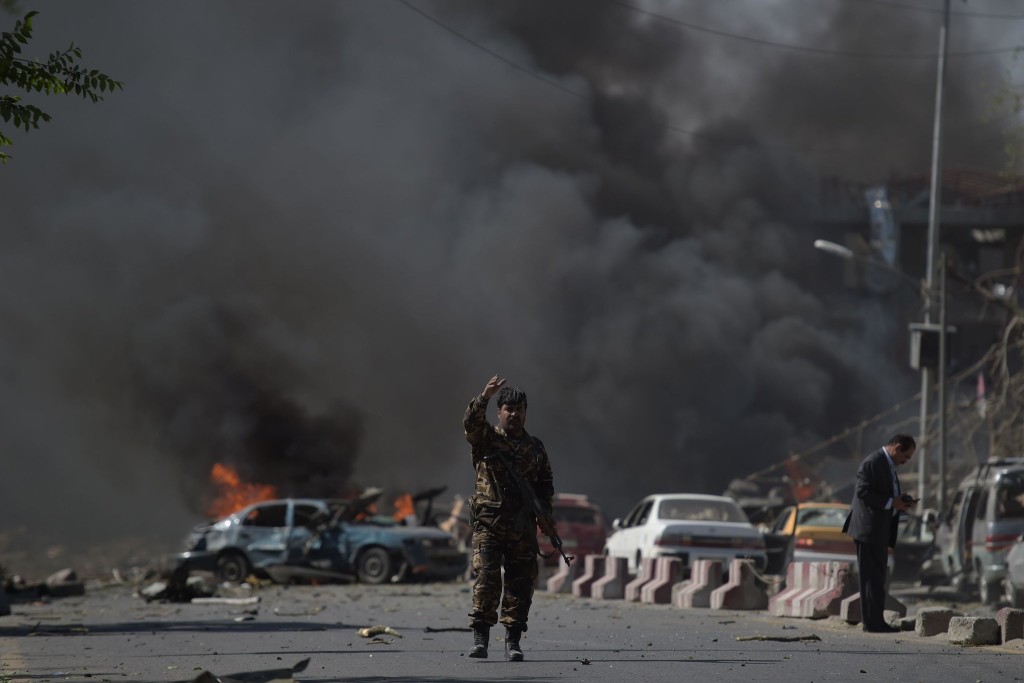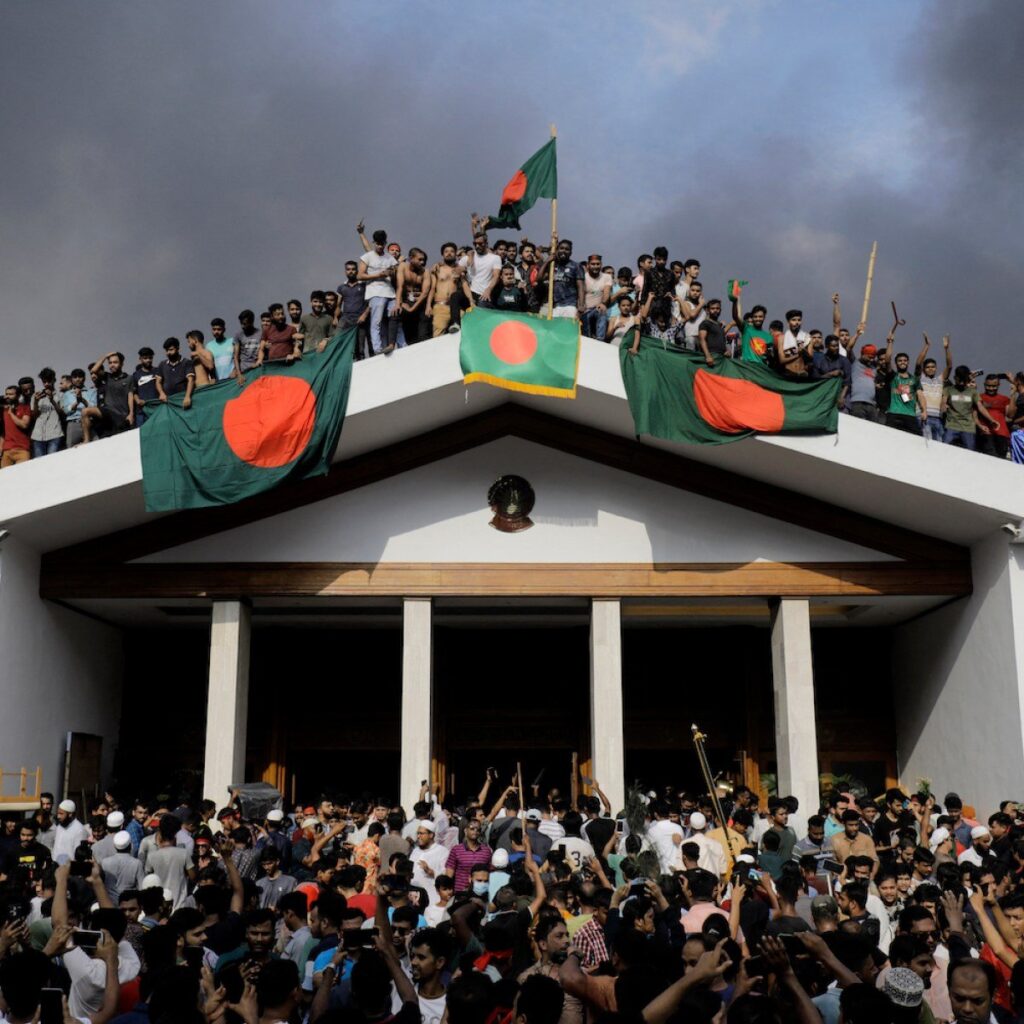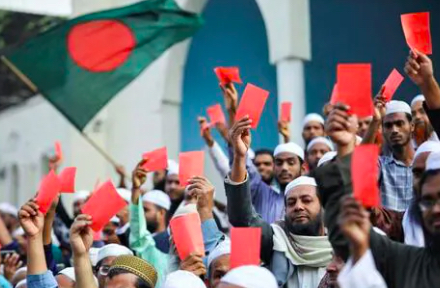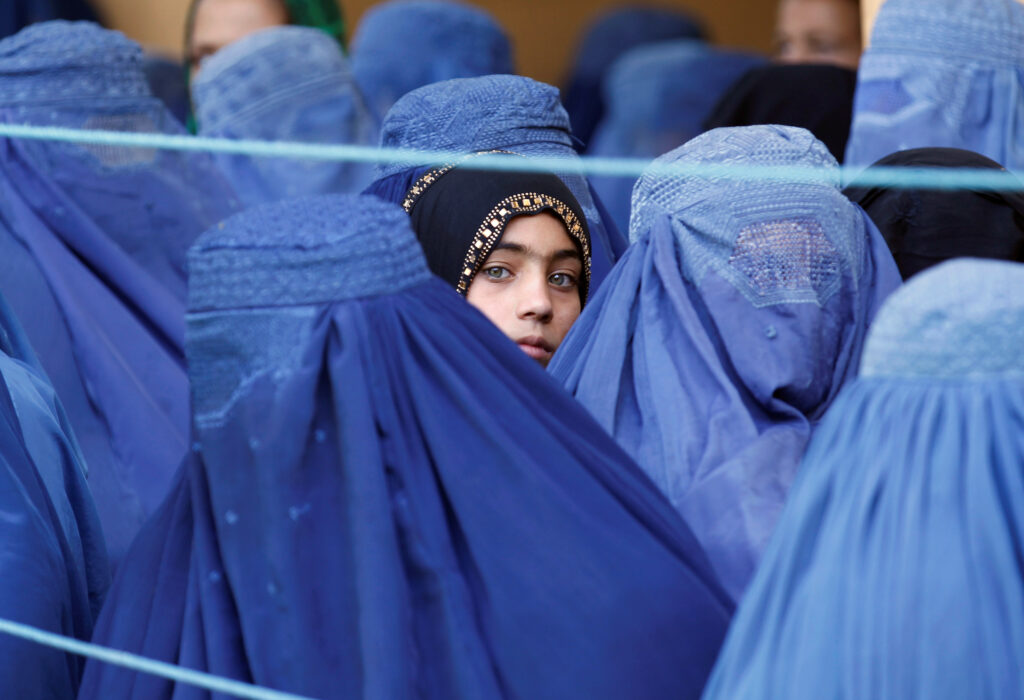MANTRAYA POLICY BRIEF#20: 01 JUNE 2017
SHANTHIE MARIET D’SOUZA
Abstract
A regional power realignment is taking place in Afghanistan. As countries jockey for influence in shaping the end-game in Afghanistan, India seems to be a lone bystander being sidelined even by its traditional allies- Russia and Iran. A new great power rivalry between the U.S. and Russia is evident not just in Syria and other places, but also in Afghanistan. As there are attempts at regional block formation, should India join these blocks or should it maintain its independent policy? Can an India-U.S. alliance help stabilise Afghanistan or lead to further intensification of regional power competition? The rapidly changing geopolitical realities and increased spectre of violence is something that New Delhi cannot ignore.

(Site of the 31 May 2017 explosion in Kabul, Photo courtesy: Washington Post)
On 31 May, a truck bomb exploded in central Kabul killing nearly 100 people and injuring hundreds others. The continuing ghastly violence serves as a reminder of the difficulties the country has encountered in its search for a semblance of peace and stability. It is convenient to blame the Afghan security forces for their supposed inability to put to halt to such attacks. The larger issues, however, are the increased regional power competition and the international community’s ad hoc strategies with regard to the end state in Afghanistan.
Renewed Global Rivalry and Regional Reconfiguration
The Trump administration mulls over an appropriate Afghan strategy. For the top U.S. commander in Afghanistan, Gen. John Nicholson, the war with the Taliban is a stalemate. He has said several thousand more troops are needed to turn the tide of Afghan war. Even after the May 2017 Brussels summit, President Trump as well as the NATO countries are undecided on the requests for more troops. Meanwhile, Russia, a mute spectator in the 16 years of the U.S.-led war on terror in Afghanistan, is filling in the vacuum. This includes engaging the Taliban and leading a new diplomatic effort to shape Afghanistan’s future. Much of this coincides with the Kremlin’s attempt to wield greater international influence at the U.S.’ expense elsewhere, including intervening in the war in Syria and attempting to broker new Israeli-Palestinian negotiations.The renewed Russian interest in Afghanistan is perceived as a function of “American retrenchment’. The perception has intensified as President Trump since taking office has rarely mentioned Afghanistan.
Amidst such Russian maneuveres, the U.S. military targeted an Islamic State (IS) cave complex in eastern Afghanistan’s Nangarhar province with the 22,000-pound “mother of all bombs” (MOAB), the largest non-nuclear weapon ever used in combat on 14 April, 2017. It came a day before Russia was to host multi-nation talks on prospects for Afghan security and national reconciliation, the third such initiative since the December 2016 trilateral talks involving Russia, China, and Pakistan. Eleven countries – including Afghanistan, China, Iran, Pakistan, India, and former Soviet Central Asian states—met in Moscow. The U.S. skipped the talks, terming them a “unilateral Russian attempt to assert influence in the region.”
China, on the other hand, while assisting the Afghan government through security cooperation, has maintained links with the Taliban. It recently conducted joint law enforcement operations with the Afghan forces to fight terrorism. Beijing has also played host to the Taliban who visited China days after a trilateral meeting of senior diplomats from China, Pakistan and Russia in Moscow that supported lifting of international sanctions on the Taliban leaders. Reports from the field indicate that the Taliban in return has granted China the green light to restart a US$3 billion mining project in MesAyanak which has been mired in controversies since 2008. Iran too has maintained contacts with Taliban and at the same time supported to the Afghan government.
Non-state Actors and ‘Hedging Strategy’
The advent of the Islamic State (IS-Khorasan or IS-K) in Afghanistan, with its local battles against Taliban for territorial domination has further complicated the security situation since 2014. Compared to the U.S. estimate of minimal IS strength (1,000 combatants), the Russian estimate is 3,500. Amidst reports of infighting having fractured the Taliban and weakened its leadership, efforts to undermine the IS-K has emboldened it and strengthened its negotiating potential. This has led to regional countries reaching out to the Taliban in order to establish /maintain linkages with a more ‘nationalistic’ Taliban that can be contained within the borders of Afghanistan and act as an effective counter to the transnational IS. Interestingly, efforts at decimating the IS-K are directed at making the Taliban more acceptable for peace negotiations. Russia has also promoted easing global sanctions on Taliban leaders who prove cooperative. The IS threat, thus, is part of a larger ‘hedging strategy’ on Afghanistandriving renewed Russian, Chinese and Iranian interest in the region. The emergence of Russia- China- Pakistan alliance has dramatically changed the equations on the ground for India.
India’s Interests and Policy Options
India hence finds itself in a queer position. Being the largest regional donor with pledges more than US $ 2 billion in various infrastructure and capacity building programs, India’s development assistance has accrued tremendous good will among the Afghans. During my visits to provinces in Afghanistan (Kandahar, Nangarhar, Badkshan, Bamyan, Balkh, Herat since 2007), Afghans have expressed gratitude and desire for more of India’s assistance. However, New Delhi has not capitalised this good will into tangible outcomes. Neither has New Delhi increased the scale of its assistance in such areas as governance and institution building to prevent the back sliding of the Afghan state apparatus. In discussions with Foreign Service officials in New Delhi, it is evident that Afghanistan is seen as a distant, volatile theatre that is of ‘secondary interest’ and are wary of an ‘over-stretch’.
In the security sector, New Delhi’s minimalistic approach has not helped strengthen the Afghan security forces to face the onslaught of the insurgency. This is viewed by the military elite in Afghanistan as reneging on the commitments made by India in the Strategic Partnership Agreement of October 2014, the first agreement signed by India in the neighbourhood.
As there is a scramble among major countries to embrace the Taliban, New Delhi exercise caution in participating in externally mediated peace processes. A number of pro-talks advocates and international commentators are not averse to granting concessions like ceding territory with an asymmetric federalism arrangement to the Taliban, such propositions are acceptable neither to the Afghans nor the Taliban. While some Indian commentators have joined the chorus of talking the Taliban, any such attempt violates India’s core objective of building a strong and stable Afghanistan that acts as a bulwark against the return of extremist forces. Beyond elite buy-in, New Delhi will have to work towards mobilizing the grass root participation in the state building process to preserve the fragile gains of the last decade.
Time, however, is in short supply in Afghanistan. In the regional reconfiguration of powers, New Delhi will have to signal its intent to be a reliable friend and important power in the region. During mydiscussions with senior government officials in Kabul it is evident that they expect that India plays a role commensurate with major power status in the region. The present reticence has sent mixed signals. In April 2017, I spoke with Dr. Shaida Mohammad Abdali, Afghanistan’s ambassador to India in New Delhi. Ambassador Abdali expressed his desire to see India playing an important role in bringing peace and stability in the country. Neither can India be a lone bystander, nor can it fritter away the goodwill gained among the Afghan people by not taking a more proactive policy, Abdali said.
Being sidelined from its traditional alliance, New Delhi has the option of either joining the U.S. or maintain its independent position. President Trump’s senior military and foreign policy advisers have recently proposed a major shift in strategy in Afghanistan The new plan, which still needs the approval of the president, calls for expanding the U.S. military footprint (surge) as part of a broader effort to push an increasingly confident and resurgent Taliban back to the negotiating table. However, mere addition of troop numbers without a fundamental change in strategy will not help achieve such objectives nor stabilise Afghanistan. New Delhi needs to take a clear position in partnering with the US or any other regional power/block in addressing the causes of instability in Afghanistan, particularly when Afghans look up to India to play that leadership role.
(Dr. Shanthie Mariet D’Souza is the Founder and President of MISS and has carried out field studies in Afghanistan since 2007. This Policy Brief has been published as part of Mantraya’s Mapping Terror and Insurgent Networks Project. All Mantraya publications are peer-reviewed.)




